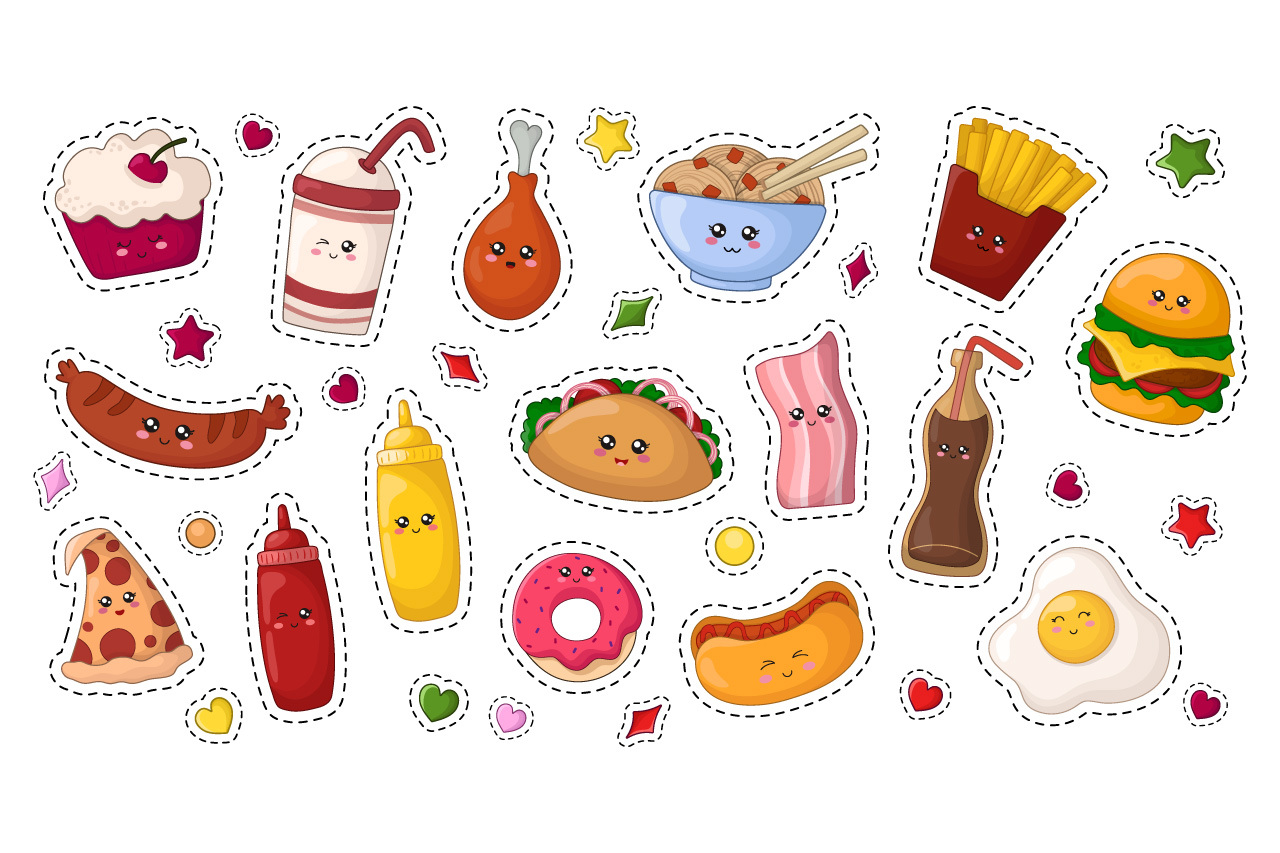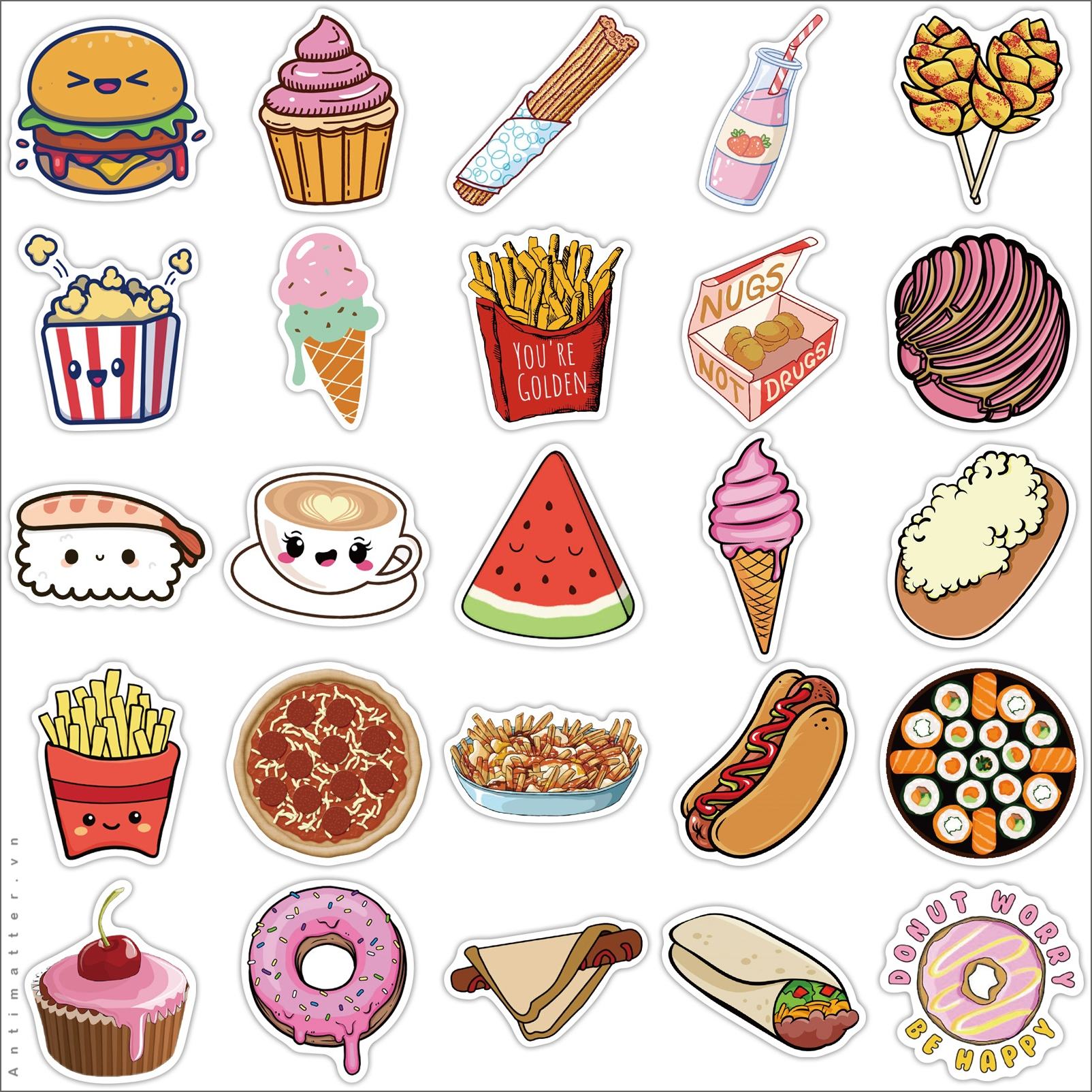In the realm of food branding and packaging, food stickers emerge as a captivating tool, transforming ordinary products into culinary canvases. From vibrant labels that elevate packaging designs to interactive stickers that engage consumers, food stickers have become an indispensable element in the food industry.
Their versatility extends beyond mere decoration, as they serve as powerful marketing tools, enhancing product visibility, and fostering brand loyalty. Dive into the world of food stickers, where creativity meets practicality, and discover their transformative impact on the food industry.
Types of Food Stickers

Food stickers are a versatile and effective way to enhance the branding, packaging, and marketing of food products. They are available in a variety of materials, each with its own advantages and disadvantages.
Materials Used in Food Sticker Production
- Paper:Paper stickers are the most economical option and are well-suited for short-term applications. They are not waterproof or durable, making them unsuitable for use in moist or high-traffic areas.
- Vinyl:Vinyl stickers are more durable and waterproof than paper stickers. They are also resistant to fading and tearing, making them ideal for outdoor use or on products that will be exposed to moisture.
- Plastic:Plastic stickers are the most durable and expensive option. They are waterproof, fade-resistant, and tear-resistant, making them ideal for long-term applications or on products that will be subjected to harsh conditions.
Applications of Food Stickers
Food stickers can be used for a variety of applications, including:
- Branding:Food stickers can be used to create a consistent brand identity across all of a company’s products. They can be used to display the company’s logo, contact information, and other branding elements.
- Packaging:Food stickers can be used to seal food packaging and prevent contamination. They can also be used to provide information about the product, such as the ingredients, nutritional value, and storage instructions.
- Marketing:Food stickers can be used to promote new products, special offers, and events. They can also be used to create interactive experiences for customers, such as scratch-off games or peel-and-reveal contests.
Design and Customization

Creating effective food stickers requires careful consideration of design elements. The right combination of colors, fonts, and imagery can enhance brand recognition and make your stickers stand out. Customization options allow you to personalize stickers with logos, graphics, or text, ensuring they align perfectly with your brand identity.
Color Combinations
Color plays a crucial role in attracting attention and conveying emotions. Choose colors that complement your brand and resonate with your target audience. Consider using vibrant hues for eye-catching designs or more subdued tones for a sophisticated look.
Fonts
The font you choose can significantly impact the overall tone of your stickers. Opt for legible fonts that are easy to read, even from a distance. Consider using bold or stylized fonts to create a memorable impression.
Imagery
High-quality images can make your food stickers truly captivating. Use clear and visually appealing images that showcase your products or services. Ensure the images are relevant to your brand and evoke a positive response.
Customization
Customization allows you to tailor your food stickers to your specific needs. You can add your company logo, design custom graphics, or include personalized text messages. This flexibility enables you to create stickers that are uniquely yours and effectively promote your brand.
Creative and Innovative Designs
Push the boundaries of creativity with innovative food sticker designs. Experiment with different shapes, textures, and finishes to create stickers that stand out from the crowd. Consider using holographic or glow-in-the-dark materials for a truly unforgettable experience.
Applications and Uses

Food stickers play a significant role in the food industry, offering a versatile and effective means of branding, packaging, and promoting food products.
By utilizing vibrant colors, captivating designs, and strategic placement, food stickers enhance product visibility and appeal, attracting the attention of potential customers and increasing brand recognition.
Branding
- Food stickers are a powerful tool for establishing brand identity and building customer loyalty.
- They can be customized with logos, brand colors, and unique designs, creating a memorable and consistent brand image.
- By consistently using food stickers across various products and marketing materials, companies can reinforce their brand message and foster brand recognition.
Packaging
- Food stickers serve as an essential part of product packaging, providing important information to consumers.
- They can display nutritional facts, ingredient lists, storage instructions, and other vital details, ensuring transparency and compliance with regulations.
- Additionally, food stickers can enhance the visual appeal of packaging, making products more attractive and shelf-ready.
Promotions
- Food stickers are an effective way to run promotions and drive sales.
- They can be used to offer discounts, free samples, or loyalty rewards, enticing customers to make purchases.
- Food stickers can also be used to promote special events, seasonal offerings, or limited-edition products, creating a sense of exclusivity and excitement.
Production and Distribution
The production of food stickers involves several steps to ensure high-quality and visually appealing products. Firstly, the design is printed onto a durable material, such as vinyl or polypropylene, using specialized printing techniques like flexography or digital printing. The printed material is then precisely cut into individual stickers using advanced die-cutting machines.
Finally, the stickers undergo a finishing process, which may include lamination or UV coating, to enhance their durability and resistance to moisture and wear.The distribution channels for food stickers are diverse, catering to the varying needs of businesses and consumers.
Wholesalers play a significant role in distributing large quantities of stickers to retailers, who then sell them to end consumers through their physical stores or online platforms. Additionally, online marketplaces and e-commerce websites provide a convenient avenue for businesses to purchase food stickers directly from manufacturers or distributors.When
choosing a food sticker supplier, several factors should be considered to ensure the best possible outcome. The supplier’s reputation, experience, and ability to meet specific requirements are crucial. Additionally, the quality of materials used, printing techniques employed, and the supplier’s commitment to customer satisfaction are important considerations.
By carefully evaluating these factors, businesses can select a reliable and capable supplier that can provide high-quality food stickers that meet their needs.
Trends and Innovations
The food sticker industry is constantly evolving, with new trends and innovations emerging all the time. Some of the most notable trends include the use of augmented reality (AR) and other interactive features, as well as the development of new materials and printing techniques that allow for more creative and durable stickers.
Augmented Reality and Interactive Features
Augmented reality (AR) is a technology that superimposes digital information onto the real world. This can be used to create interactive food stickers that come to life when viewed through a smartphone or tablet. For example, a food sticker of a pizza could trigger a video of the pizza being made, or a food sticker of a hamburger could trigger a game where the user has to assemble the hamburger.
New Materials and Printing Techniques, Food stickers
The development of new materials and printing techniques has also led to more creative and durable food stickers. For example, some food stickers are now made from a material that is resistant to water and heat, making them ideal for use on food packaging.
Other food stickers are printed using a new technique that creates a raised, 3D effect.
Examples of Food Sticker Companies Pushing the Boundaries of the Industry
Several food sticker companies are pushing the boundaries of the industry with their innovative products. For example, the company StickerYou offers a wide range of AR food stickers that can be used to create interactive marketing campaigns. The company Printcious offers a variety of food stickers made from durable materials that are perfect for use on food packaging.
And the company Zazzle offers a wide range of food stickers that can be customized with your own designs.
FAQ: Food Stickers
What are the benefits of using food stickers?
Food stickers offer numerous benefits, including enhanced product visibility, increased brand awareness, improved packaging aesthetics, and interactive marketing opportunities.
What materials are commonly used in food sticker production?
Food stickers are typically made from durable materials such as paper, vinyl, or plastic, ensuring their longevity and resistance to moisture and wear.
How can I customize food stickers with my own designs?
Many food sticker suppliers offer customization services, allowing you to incorporate your logos, graphics, or text, creating unique and personalized stickers that align with your brand identity.
